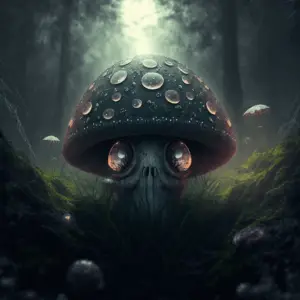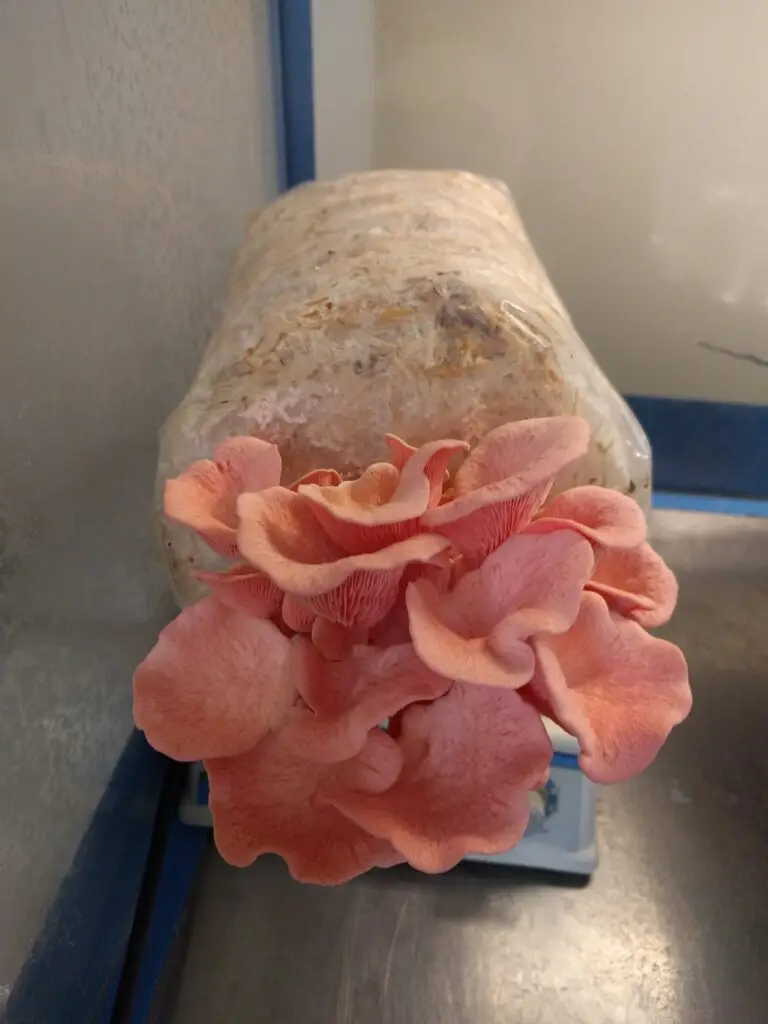
Phoenix Oyster Mushroom: A Complete Guide to the 10cc Liquid Culture Syringe
If you’re passionate about gourmet mushrooms or just starting your


Psilocybe Azurescens is renowned as one of the most potent species of psychedelic mushrooms. Discovered in the Astoria region of Oregon in 1979, this species has captured the attention of mycologists and psychonauts alike due to its exceptionally high concentrations of psychoactive compounds. The primary active ingredients in Psilocybe azurescens are psilocybin and psilocin, along with baeocystin, another tryptamine derivative that contributes to its overall effects.

What makes Psilocybe azurescens particularly fascinating is its potency; this mushroom contains up to 1.8% psilocybin, 0.5% psilocin, and 0.4% baeocystin by dry weight, significantly higher than most other psychedelic mushroom species. Its intense psychoactive effects can induce profound visual and auditory hallucinations, altered states of consciousness, and a deep sense of introspection.
This species thrives in sandy, nutrient-rich soils, often found in coastal dune areas and alongside decaying wood or grasses. It is typically observed from late autumn to early winter in its natural habitat, where cool, damp climates promote its growth. Its distinct caramel-colored cap, bruising blue when handled, and pale, slender stem make it relatively easy to identify for those familiar with mushroom foraging.
Due to its strength, Psilocybe azurescens is highly sought after but requires careful handling and respect. It is illegal to cultivate or possess in many jurisdictions because of its psychoactive properties. However, ongoing research into the therapeutic potential of psilocybin for mental health conditions has further spotlighted this species, inspiring conversations about its potential benefits in controlled, clinical settings.
As one of nature’s most intriguing fungi, Psilocybe azurescens spore syringe continues to be a subject of fascination for researchers, enthusiasts, and adventurers alike.

Psilocybe azurescens stands out among the tryptamine-bearing mushrooms because of its significant levels of psilocybin and psilocin. By dry weight, it can contain up to 1.8% psilocybin, 0.5% psilocin, and 0.4% baeocystin. On average, these mushrooms typically have about 1.1% psilocybin and 0.15% psilocin, making them among the most potent naturally occurring psychedelics. For comparison, this is considerably higher than the more commonly known Psilocybe cubensis, which generally contains lower concentrations of these active compounds.

The high potency of Psilocybe azurescens means that even small doses can produce profound psychoactive effects. Users often report intense visual and auditory hallucinations, altered perception of time and space, and deep introspective experiences. This potency also requires that those who study or work with this species approach it with caution, as the effects can be overwhelming, especially for those who are inexperienced with psychedelics.
A Psilocybe azurescens spore syringe is a popular method for storing and distributing the spores of this powerful mushroom species. The spore syringe contains a liquid solution in which Psilocybe azurescens spores are suspended, ensuring their sterility and viability. This method of storage is particularly important given the sensitivity of these spores to contamination and environmental factors.
For researchers, the spore syringe is an invaluable tool. It allows for precise application of spores to a growth medium, which is essential for studying the fungal life cycle, genetic characteristics, and the conditions that optimize the production of psilocybin and other compounds. The spore syringe also makes it easier to handle the spores in a controlled environment, minimizing the risk of contamination that could compromise the integrity of the research.
Cultivating Psilocybe azurescens is a challenging endeavor, even for experienced mycologists. This species naturally grows in coastal areas with specific environmental conditions, such as sandy soils and decaying wood, typically in colder climates. These requirements make it difficult to replicate their natural habitat in a controlled environment, and as such, cultivation attempts must be undertaken with a thorough understanding of their ecological needs.
Despite these challenges, the cultivation of Psilocybe azurescens is pursued by those interested in understanding the biology of this potent species and its potential applications in therapeutic contexts. The study of these mushrooms contributes to the broader field of psychedelic research, which has gained significant interest in recent years due to the growing recognition of psilocybin’s potential benefits for mental health conditions like depression, anxiety, and PTSD.
As with other psilocybin-containing mushrooms, the legal status of Psilocybe azurescens varies by region. In many places, the possession, cultivation, or distribution of these mushrooms or their spores is illegal due to the presence of psilocybin, a controlled substance in many countries. Researchers and cultivators must ensure that they are operating within the bounds of the law, and it is crucial to approach the study of Psilocybe azurescens with respect for its powerful psychoactive properties.
Ethically, the study and use of Psilocybe azurescens should be carried out with a deep understanding of the potential risks and benefits. While this species holds great promise for scientific exploration and therapeutic use, it is also associated with intense psychoactive effects that can be overwhelming or even dangerous if not handled properly.
P. azurescens, along with a few other wood-loving Psilocybe species, presents a unique risk not commonly associated with other psychoactive mushrooms. Known as wood-lovers’ paralysis, this condition is linked to mushrooms that grow on wood, although the exact cause remains unknown due to a lack of formal research. The connection to wood substrates might even be coincidental or misleading, as the precise mechanism behind the condition has yet to be identified.
Wood-lovers’ paralysis can range in severity from mild clumsiness and muscle weakness to complete immobilization. Muscle control may be impaired, leading to stiffness, flaccidity, or an inability to coordinate movements effectively. Although temporary, the condition can be quite serious, as it leaves individuals unable to protect themselves or respond to their surroundings.
While psilocybin itself is known to affect coordination, wood-lovers’ paralysis appears to be a distinct phenomenon. Interestingly, it has been reported even at low doses and seems to occur predominantly in wood-eating mushroom species, with most cases documented in Australia.
Theories about the cause of wood-lovers’ paralysis abound, but none have been definitively proven. Despite the mystery surrounding its origins, the condition remains exceedingly rare. For those who choose to work with wood-loving Psilocybe species like P. azurescens, awareness of this risk is essential, even if the likelihood of experiencing it is minimal.
The Psilocybe azurescens spore syringe represents a gateway to exploring one of the most potent psychedelic mushrooms known to science. With its high concentrations of psilocybin, psilocin, and baeocystin, Psilocybe azurescens offers significant potential for research into the effects of these compounds and their applications in medicine and therapy. However, due to its potency and the challenges associated with cultivation, it is a species that demands careful study and respect. Whether for mycological research or the pursuit of understanding psychedelic substances, Psilocybe azurescens remains a subject of great interest and importance in the field of mycology.

If you’re passionate about gourmet mushrooms or just starting your

Mushrooms have long been revered in traditional medicine, but modern

When most people think of mushrooms, they imagine small fungi

Mushrooms are more than just fascinating organisms that sprout from

Stay updated with our newsletter for exclusive offers, insights, and the latest in psilocybe cubensis research.

At The Spore Depot, we are dedicated to providing the highest quality psilocybe cubensis mushroom spores for research purposes. With an extensive selection of mushroom spores, our products meet the strictest quality standards, ensuring they are prepared under sterile conditions for optimal results. Whether you’re working with a spore syringe or creating a spore print for detailed analysis, we are committed to supporting your journey into the microscopic world.
Our exceptional contact customer service is here to assist you every step of the way, making sure your experience with psilocybe cubensis spores is both rewarding and insightful. At The Spore Depot, your satisfaction is our top priority as you explore the fascinating world of fungi.